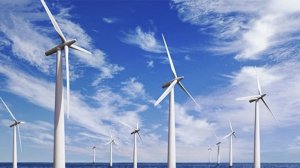The South African Wind Energy Association (SAWEA) has come out in support of feasibility studies into offshore wind energy, saying this could solve South Africa’s energy woes.
Reacting to recent research on offshore wind energy by Stellenbosch University academics, SAWEA says although South Africa is still far from developing this source of energy, further investigation into its viability must be pursued now.
The study titled ‘Offshore wind energy – South Africa’s untapped resource’, acknowledges that tapping the energy-generating potential of South Africa’s waters is crucial if the country is to overcome the energy crisis.
South Africa is experiencing its most severe revolving power-cuts, implemented by State-owned power utility Eskom, in more than a decade. The study states that offshore wind energy could potentially help resolve the ongoing energy crisis that Africa’s most advanced economy is enduring.
“The wind market in South Africa is currently focused on onshore wind, because we have the land space available and it’s cost-competitive, which means almost all of our members are developing onshore wind,” SAWEA CEO Ntombifuthi Ntuli notes.
She mentions that, although SAWEA does not think South Africa will see the first offshore development in the country until 2030, it is still an area worth investigating.
“Good wind sites will be taken up during the next decade as we build 14.4 GW of wind power. This is a good prompt for investigation into offshore wind to begin now. We have seen an increased focus from academia on this topic and as an industry we support it and look forward to the outcomes.”
Stellenbosch University Department of Mechanical and Mechatronic Engineering researchers Gordon Rae and Gareth Erfort say that with South Africa’s heavy reliance on an ageing fleet of coal-fired power plants, the country should perhaps start to tap into offshore wind energy resources to help address future electricity shortages.
“If we were to install wind turbines at different depths off the KwaZulu-Natal and Western Cape coasts, they could potentially supply between 15% and 800% of South Africa’s yearly electricity demand.”
The researchers’ assessment showed the most suitable regions for the development of offshore wind energy are Richards Bay (within the 10 km coastline buffer and about 15 km offshore south of Richard Bay), Durban (within the 10 km buffer and about 25 km offshore of KwaDukuza) and Struisbaai (within the 10 km buffer zone and about 15 km offshore).
According to Eskom, a typical South African household uses about 30 kWh/d or 1 0950 kWh/y, which means that 44.52 TWh could technically power about four-million average households annually. Similarly, 2 387.08 TWh could power roughly 218-million average households a year.
This study revealed that South Africa has an annual offshore wind energy production potential of 44.52 TWh of electricity if wind turbines were to be installed in shallow waters (depths of less than 50 m) and 2 387.08 TWh with wind turbines in deeper waters (depths less than 1 000 m).”
Considering that South Africa’s annual electricity consumption is approximately 297.8 TWh, the calculations done by the study show the estimated annual energy production (AEP) available through 44.52 TWh could theoretically meet 14.9% of South Africa’s national electricity demand. Similarly, the estimated AEP available through 2 387.08 TWh could theoretically satisfy the country’s yearly electricity demand eight times over.
The research concludes that this creates an opportunity for a transition to offshore wind technology which is a clean electricity generation alternative that presents power security and decarbonisation opportunity for South Africa.
Edited by: Zandile Mavuso
Creamer Media Senior Deputy Editor: Features
EMAIL THIS ARTICLE SAVE THIS ARTICLE
ARTICLE ENQUIRY
To subscribe email subscriptions@creamermedia.co.za or click here
To advertise email advertising@creamermedia.co.za or click here













